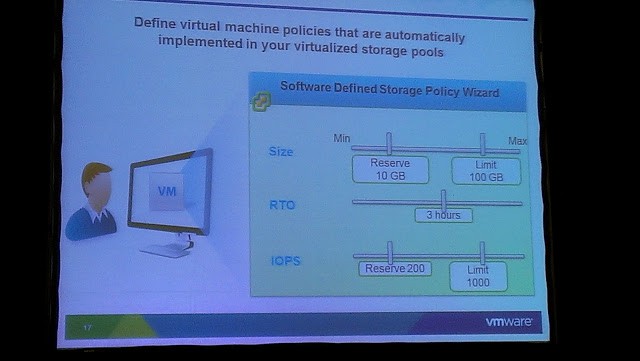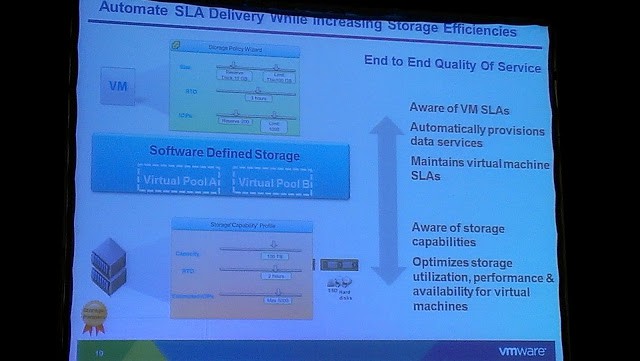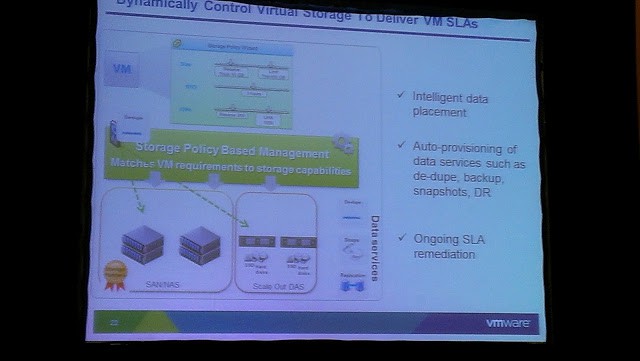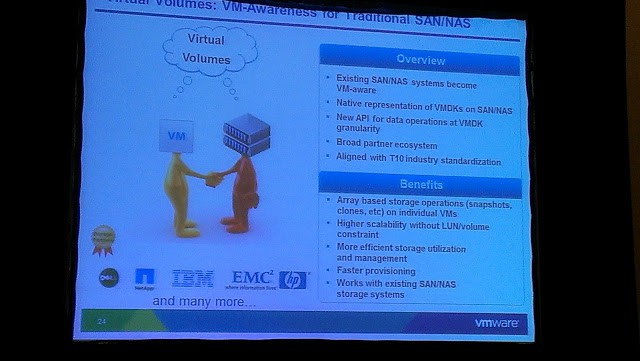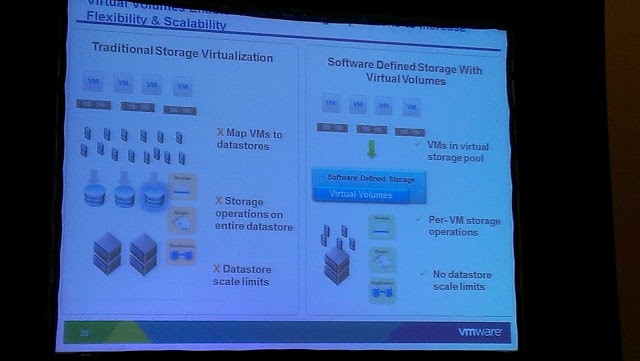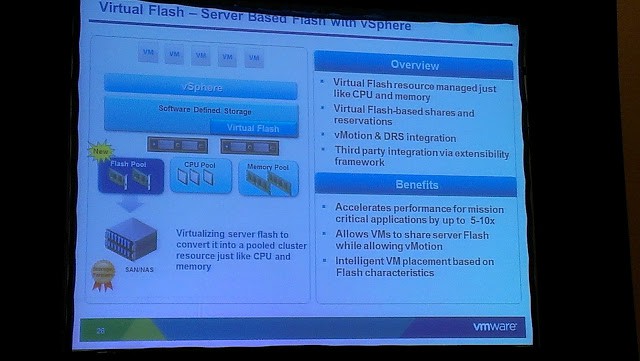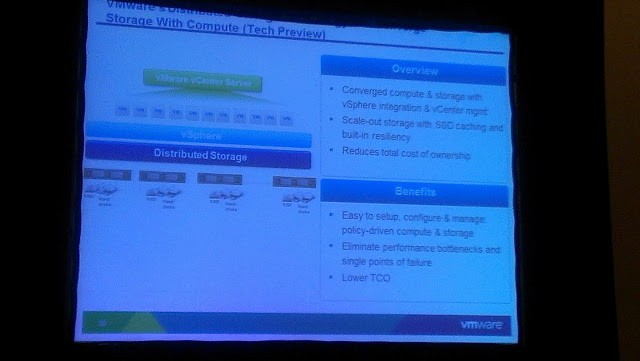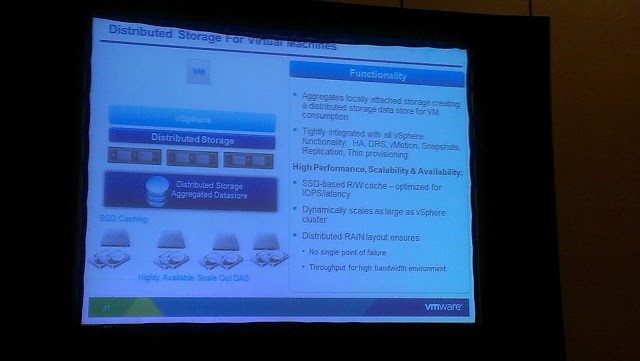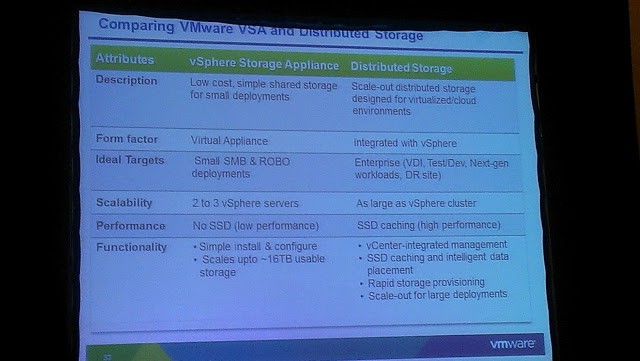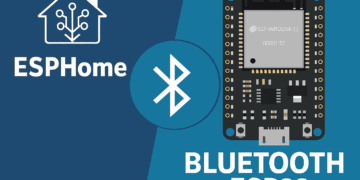This session was an overview of where VMware sees the direction of storage for virtualized datacenters. To keep with the theme of ‘software defined’ everything, they also have a vision for software defined storage. It is a radical departure from how we view storage today, and the concepts of LUNs and datastores will go away. A session later today will do live demos of some of these features, so stay tuned for another blogpost on this subject. Session notes:
- Software-defined datacenter simplifies the process to define an application and all the resources it needs.
- Takes 5+ days to fully provision a VM (firewall, IDS, storage, load balancer, etc.). Vision is to take that down to minutes.
- Virtualization had a major impact on storage – more arrays, more shared storage, and a new data container (VMDK). New workloads like VDI and added expectations for fast provisioning.
- Three pain points: Storage management is too complex, cost of ownership is too high, SLAs are too difficult to ensure.
- Current storage model is manual and inefficient
- Storage costs are high due to inefficient storage usage and data services are tied to a LUN and not VMs.
- Multitude of device specific tools to manage
- Inability to make efficient usage of SSD and HDD without losing VM mobility
- vSphere 5.1 Storage Features
- Storage vMotion, Storage DRS, VAAI, VASA, VADP, Storage I/O control, profile driven storage
- Software Defined Storage Vision
- Defined Storage Policy Wizard – Size, RTO, IOPS
- Data services from HW partners – E.g. de-dupe, snapshots, replication, caching, encryption.
- Automate SLA delivery while increasing storage efficiencies
- Policy based automation for all apps across all types of storage
- Enhance SAN/NAS with VM-awareness and virtualized flash
- Enable scale out DAS for vSphere
- How will VMware deliver this?
- Storage Policy Based Management
- Auto-provisioning of data services such as de-dupe, backup, snapshots, DR
- Ongoing SLA remediation
- Enable traditional SAN/NAS systems using virtual volumes
- Existing SAN/NAS systems become VM-aware
- Native representation of VMDKs on SAN/NAS
- New API for data operations at VMDK granularity
- “Virtual Volume” abstraction – No more LUNs, no more mount points
- VMs in virtual storage pool
- Per-VM storage operations
- No datastore scale limits
- Virtual flash frameworks
- Local flash storage pool
- Allows VMs to share server flash while allowing vMotion
- Intelligent VM placement on flash characteristics
- vMotion and DRS integrated
- Converts server flash to another pool, like CPU and memory
- Accelerates performance for mission critical apps by 5-10x
- Enabling Scale out DAS
- Aggregates locally attached storage creating a distributed storage datastore for VM consumption
- Integrates with HA, vMotion, DRS, snapshots, etc.
- Primary use cases – VDI, Test/Dev, big data, DR target
